1971
At that time the Technical Committee of the IFA was paralysed by the fight between Vernon Stratton and the Auers about the question of whether wooden or aluminium spars should be used at the 1872 Olympic Games in Kiel. Gilbert Lamboley, the newly elected Chairman of the Technical Committee was working hard on a new method to control the distribution of weight in a dinghy.
1972
In 1972 it was decided to introduce the pendulum test of Gilbert Lamboley for an experimental period. If it turned out to be satisfactory it was intended to delete the existing rales to control the centre of gravity. For years people had been talking about the effect of the distribution of weight upon the performance of a dinghy. The Lamboley test offered a method to measure and limit these factors. The 1964 rules attempted to control the weight distribution by extremely strict controls on the scantings. The introduction of the Lamboley test would allow the relaxation the scanting rules, to free the construction method (including sandwich), to allow double bottoms, and to make measurement easier and faster. In November 1972 the IYRU approved to introduce the Lamboley test in the Finn rules, and expressed its hope that the experiences in the Finn Class in 1973 will pave the way for the introduction of the same method for other classes.
|
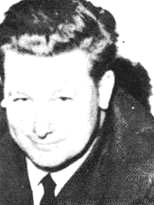 |
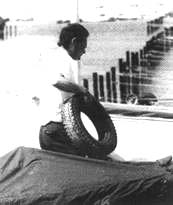 |
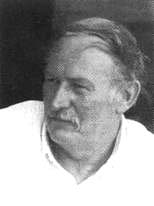 |
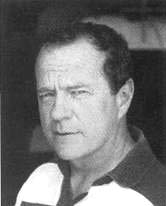 |
| Chief Measurers of the Finn Class: Vernon Forster, Peter Mohilla, Robert Laban, Juri Saraskin |
|
1973
The pendulum test was made effective for the Finn Class in March 1973. Consequently it was possible to abandon the rules controlling the centre of gravity up to now by measuring the bow weight and tilting the hull on one gunwale. After the pendulum test was successfully introduced and tested, it was then possible to free the construction method of the hull and to allow double bottoms. On the basis of these changes Gilbert Lamboley developed a new measurement book, which had the rales on the right-hand pages and the remarks and instructions to the measurers on the left. The weight of the rudder including tiller was fixed at 3.2 kg, three years later to be raised to 4.0 kg. Without much saying Gilbert changed the size of the sail-window from the odd 0.279 m 2 (3 sq. feet) of 1958 to 0.3 m 2.
|
1974
At the Gold Cups in 1973 at Brest and in 1974 at Long Beach there were again problems with the templates. Lamboley discovered, that the templates produced by Fairey Marine in the previous years had varied in shape and that the drawings of the body lines and the templates on supposedly stable material were not stable either. Gilbert Lamboley develop a new method for the production of templates from 3 mm tensile aluminium with a computer guided milling cutter on the basis of the full size drawing of the Finn body lines on an aluminium sheet, produced by Fairey Marine under guidance of Richard Creagh-Osborne in 1963. In 1974 it was ruled and approved by the IYRU, that masts had to be watertight. However only three years later this rule was abandoned again. It turned out that this rale rather caused water to be trapped inside the mast rather than keeping it out.
|
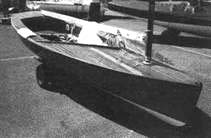 |
| The Finn that Vernon Stratton had built with the first ever double bottom |
|
1975
There were problems with the pendulum test. It induced builders of plastic boats to use more expensive building methods. Therefore the IFA asked to increase the minimum radius of
gyration from 1100 mm to 1150 mm. The IYRU approved 1140 mm. Attempts to find satisfactory rales for the control of hull stiffness and of pumping failed. The new templates developed by Gilbert Lamboley found full approval. It was decided that only the IFA Technical Committee would have the ability to issue these templates. The drawings of templates and of the body lines will lose their authoritative status and are of informative value only.
1976
The rale books of 1974 had been all sold and a new 1976 edition had to be printed. The following proposals of the Technical Committee of the IFA found approval of the IYRU in November 1976: The weight of the rudder together with the tiller was raised to 4.0 kg. The radius of gyration was reaffirmed at 1140 mm. Loose footed sails were once again ruled out. The IYRU discretely expressed their indignation, that the IFA frequently asked for rale changes on identical matters within a few years. The Technical Committee of the IFA was asked to discuss matters and conduct proper experiments before handing in rale changes for approval. In 1976 most of the energies of the Technical Committee were absorbed by the internal fight within the IFA, whether the weight of the boat should be reduced or not. The President, Marino Barendson, strongly favoured the reduction of the weight and had the means to travel all around the world in order to find approval. Gilbert Lamboley was sick and had difficulties with his business and could only fight back by writing letters. There was not much productive work performed in regard with the Finn rales.
1977
The 1977 AGM decided to delete again the rale about the floatability of the mast, adopted only in 1974. Gilbert Lamboley had attempted to become president of the IFA without success. He was discouraged and did not do much for the Technical Committee of the IFA.
1978
A number of new technical developments caused the concern of the Technical Committee. Roga built a Firm with a sidedeck shape not in accordance with an interpretation of the class rules. In the execution of that matter some internal and external problems came up, in regard with the competence of the Chairman of the Technical Committee, the Executive Committee, the Council and individual members to write letters to the IYRU, to boat builders or regatta organisers. A number of rule changes and also changes of the constitution in regard with the Technical Committee were discussed, to be agreed upon and effective in 1979/1980. Some boats were found to be out of shape at station 8.
1979
For the 1979 AGM in Weymouth Gilbert Lamboley had prepared a long list of pending problems, but could not attend himself. Important matters which were discussed, handed in to the IYRU and finally approved included the following. The travel of the mainsheet block was limited by 550 mm from the centreline and not by the edge of the side decks. The pendulum test had to be executed with the centreboard and the control lines in the boat. Hiking fittings made of soft material were allowed but an alteration of the side- deck-shape was prohibited. Steel was included in the list of possible materials for the mast. In 1979 the emphasis in regard with hulls not measuring at station 8 shifted from Taylor to
Vanguard. The need for an improvement of the measurement procedure in regard with the definition of the stations became more and more evident.
|
| |
This included the change of the constitution, the procedure for any rule changes, the redefinition of the maximum horizontal play of the mast at the deck and the heel, the materials allowed to make the mast, facilities to drain the mast, the halyard, the travel of the mainsheet block, the redefinition of the pendulum test, the possibility to use any one thickness of material for the sail, and the limitation of weight jackets to 20 kg.
1982
The AGM in Medemblik in 1982 decided to request that lead correctors have to be visible. The IYRU approved two years later. Case laws about the height of the deck ring, the strength of the paddle and of the bailer and the elimination of wedges in measuring the gaps between templates and the hull were agreed upon. Further progress was made in the development of jigs for the definition of the stations at majors regattas. Andrzej Ostrowski was elected as the new Chairman of the Technical Committee.
1983
The discussions of the Technical Committee, the decisions of the AGM and the approval of the IYRU in 1983 covered one rule change and a number of case laws. Masts made of any material were allowed for one year after the 1984 Olympics in order to gain more experience on new techniques. John Christianson had built a jig for the measurement at the 1983 Gold Cup, which was declared the prototype to be required at future major IFA events for the definition of stations for the hull shape measurement. This ended the controversy of the previous years about station 8.
1984
In order to allow for further technical development, the rule about the materials for the sail was amended in 1984. Any combination of flexible materials was allowed.
1985
The 1985 AGM decided to prepare a new edition of the Rule Book to become effective after the Olympic Games 1988. The Technical Committee Chairman requested and the IYRU agreed that the experimental period for masts be extended until the end of the 1986 Gold Cup. Peter Quigley from the US made a prototype mast made of a braided composite material consisting of carbon-fibre and s-glass in an epoxy matrix. This mast appeared to be successful in racing in the US.
1986
The class had authorised experimentation with Carbon Fibre masts, and some were brought by the USA team to the Gold Cup. They were not used in the regatta, but the Technical Committee recommended that the IYRU should allow use of the material after the 1988 Olympic Games. After inspecting these masts, the Technical Committee produced guidelines: the masts should be of similar diameter to Needlespar aluminium masts, which should
not be made obsolete. There was no suggestion about reducing the minimum weight, even though the experimental masts weighed as little as 6 kilos. At the Gold Cup there was concern over centreplates which were sharper than the permitted half round on the leading edge. Work commenced on a major redrafting of the rales, intended to make them more user friendly. Other matters receiving attention were the limitation of clothing weight and refinement of a class rule governing pumping.
|
|